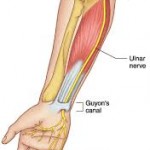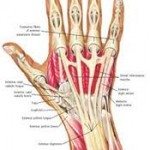Significant pain and/or swelling after trauma to the wrist injuries. Osseous and ligamentous injury that may lead to instability must be carefully investigated and ruled out before the injury is classified as a wrist sprain.

 Wrist Injuries:Initial Diagnosis and Management
Wrist Injuries:Initial Diagnosis and Management
- History and physical examination.
- Radiography
- A six view wrist trauma series should be ordered including posteroanterior, lateral, right and left oblique and PA in radial and ulnar deviation with a clenched fist.
- Treatment is based on the specific injury
- If no gross fx or instability is noted but significant pain and swelling is present, proceed with immobilization and reexamine in 2 weeks.
- Appropriate restrictions of activity.
Wrist Injuries:Ongoing Management and Objectives
- Immobilization should be utilized if needed.
- Ice compression if needed
- Flexibility and strengthening assessments
Wrist Injuries:Indication a profile is needed
- Any limitations that affect strength, range of motion, and general efficiency of upper arms.
- Slightly limited mobility of joints, muscular weakness, or other musculo-skeletal defects that may prevent hand-to-hand fighting and disqualifies for prolonged effort.
- Defects or impairments that require significant restriction of use
Wrist Injuries:Specifications for the profile
- Week 1-4
- No upper body PT requiring flexion or extension at the wrist
- No lifting or pushing with affected wrist
- No low crawl
- No stretcher duty with affected wrist(s)
- Motor vehicle driving only with splint and with caution
